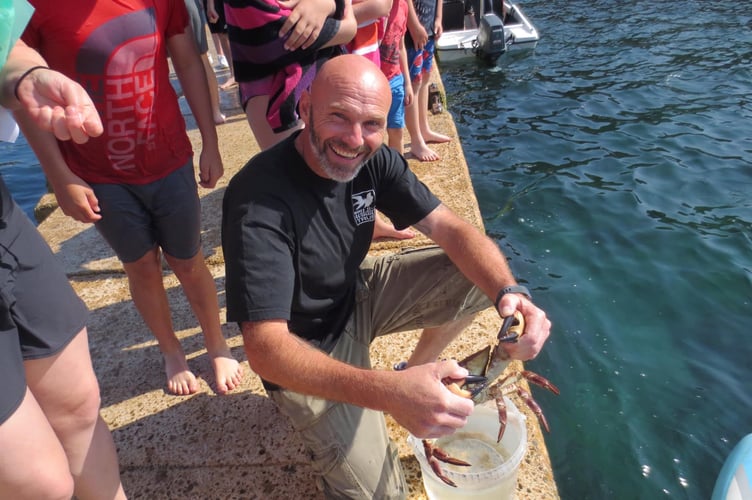As an island community we depend on the sea for so much - but it is also easy to take it for granted. In a monthly column, Dr Lara Howe, marine officer with the Manx Wildlife Trust, and Dr Peter Duncan, senior marine environment officer at DEFA, explore this underwater world and the lives of some of those who work there.
It is hoped that the earlier articles have piqued your interest in our marine world and that you downloaded one or two of the leaflets or spotter sheets but do you want to take it to the next level?
Why not volunteer with Manx Wildlife Trust? It’s a great way to deepen and broaden your knowledge and understanding of the marine life that surrounds our shores and helps MWT and DEFA protect these important species and habitats.
There are plenty of ways to help, from organising paperwork in the office, to helping run events, and to diving to collect data on species and habitats. There is a role for everyone.
Over the next few articles, we will be introducing you to some special species and habitats, and possible volunteering opportunities including some of our unsung heroes that help make the MWT the success it is. Without our band of volunteers, we wouldn’t be able to achieve as much as we do. So, a huge thank you must go to everyone who helps.
Starting above the water, how about being an event volunteer? This is a great opportunity to share with the Manx people the wonders of our waters, from rock pool sessions on our beaches, to invasive species surveys, and the Festival of the Sea in July.
We need plenty of volunteers to share their enthusiasm and passion for nature with people. One of these volunteers is Jon Russell-Dunn, who would claim he is only an amateur but that is certainly not the case.
He always has hoards of people around his tanks at Festival of the Sea eagerly listening to his enthusiastic knowledge of the species in front of him.
And when he isn’t helping us with Festival of the Sea in the summer, he can be found on the beaches helping with rockpool sessions or out exploring the shore at his leisure.
Jon has dedicated many an hour on Douglas beach, one of our 10 marine nature reserves, and it shows as he has managed to identify a staggering 173 species and this is bound to increase, never going any deeper than his wellies would allow. He has identified a variety of fish, such as gobies, dragonets and sticklebacks, sponges, snails, anemones and sea squirts including the very pretty star ascidian.
One of the best areas he has found to search is around the Tower of Refuge, with masked crabs and cuttlefish sighted.
Nighttime visits showcase different species such as squat lobsters and octopus. On one occasion a large lobster was spotted, bigger than both of Jon’s size eights put together!
Jon has even found several invasive species including Australian barnacles and the orange striped anemone, something MWT and DEFA will be keeping an eye on.
Do you want to help identify invasives species? Then check out our website for more information or download a copy of our marine invasive ID guide www.mwt.im/citizen-science/invasive-non-native-species
Whilst a little bit further out within the bay and much harder to spot due to their small size is the Beamont’s nudibranch (Cumanotus beaumonti) or sea slug.
Much prettier than your regular garden slug, it is a somewhat rare species, only found in the British Isles and Norway, and therefore important to protect it within the marine nature reserve.
It’s found here because of its main food source, the translucent nodding hydroid (Corymorpha nutans), which is abundant on the sandy seabed.
Keep an eye out on our social media, website and magazine for upcoming events, like rockpooling. an adult-only one planned later in the year.




.jpeg?width=209&height=140&crop=209:145,smart&quality=75)
Comments
This article has no comments yet. Be the first to leave a comment.